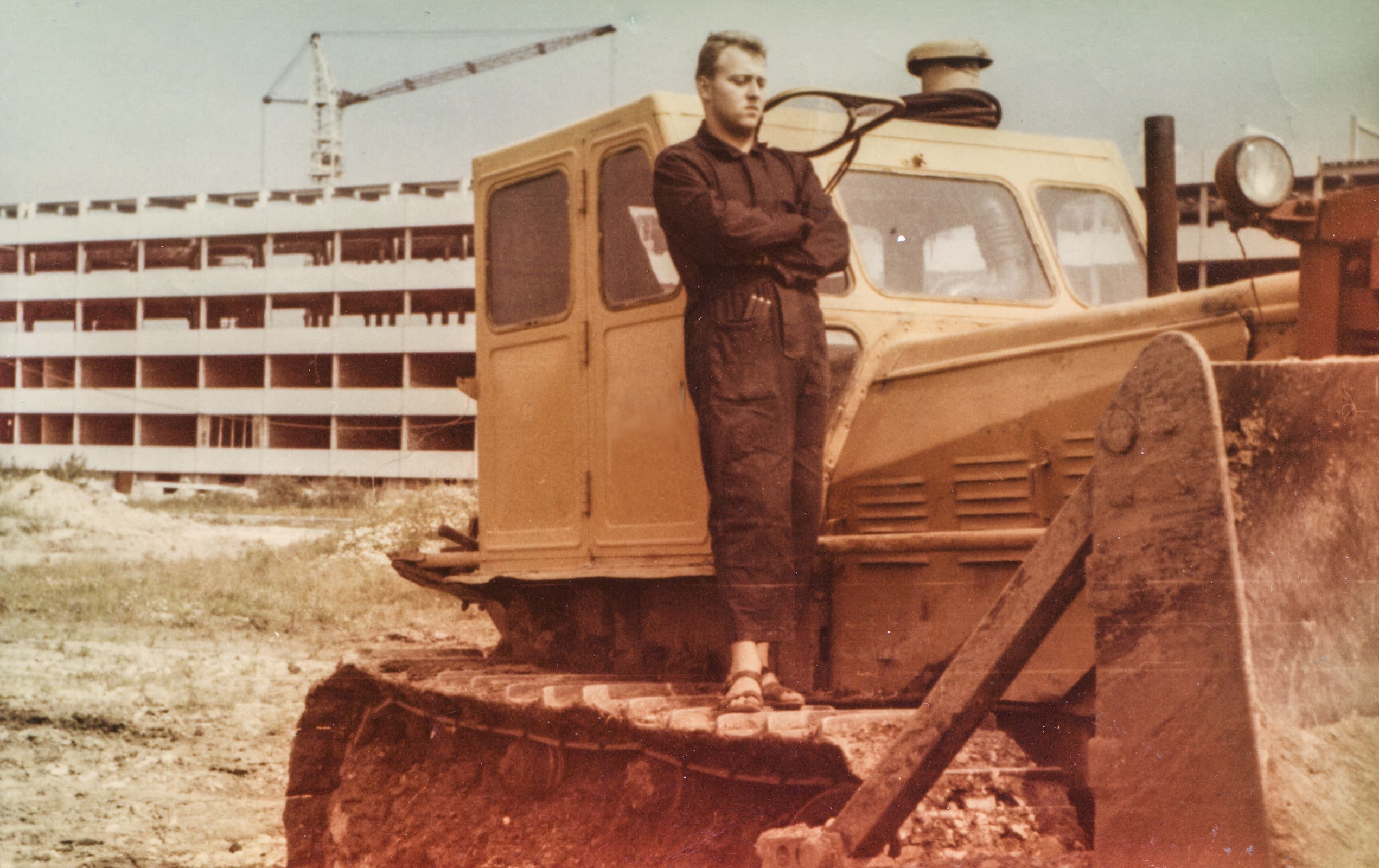
`Heavy equipment’ is not necessarily known as such because of size and weight. They’re in fact vehicles, specially designed for construction jobs that mostly involve earthwork.
For anyone interested in knowing what exactly constitutes `heavy equipment’, the following 16 vehicles help make up this category:
- Excavator
- Backhoe
- Dragline Excavator
- Bulldozer
- Grader
- Wheel Tractor Scraper
- Trencher
- Loader
- Tower Crane
- Paver
- Compactor
- Telehandler
- Feller Buncher
- Dump Truck
- Pile Boring Machine
- Pile Driving Machine
Though people rarely stop to think how indispensable heavy equipment was in the building of homes they live in, offices they work in and roads they drive on, this industry is larger than any single manufacturing segment of the US economy.
And the story of its evolution is quite interesting too.
Let’s begin at the beginning…
LATE 1800s
Between 1820 and 1860, the visual map of the United States was transformed by unprecedented urbanization and rapid territorial expansion. These changes fueled the Second Industrial Revolution, which peaked between 1870 and 1914.
Several inventors were working at this time on machinery that would support large-scale agricultural jobs and make them more efficient.
Benjamin Leroy Holt, an American inventor, manufactured a combine harvester in 1886 for agricultural purposes, followed by a steam engine tractor in 1890. Two years later, John Froelich developed the first stable gasoline-powered tractor with forward and reverse gears.
These inventions are widely accepted as precursors to construction heavy equipment, as we know them today.
1900-1920
The early 1990s saw the introduction of machines that could be used in construction projects. Many of these pieces of equipment were adaptations of models that were originally designed for agricultural use.
Prominent among manufacturers of the time was Galion Iron Works of Galion, Ohio, which was founded in 1907 and built motor and pull graders, steam and internal combustion rollers, wheeled scrapers and hydraulic cranes.
1920-1930
The first bulldozer — a modified Holt farm tractor — was manufactured in the 1920s. As their ability to move earth was proven, they grew quickly in popularity. The design was transformed into what we see today: bulldozers with caterpillar traction and an arsenal of tools and blades for moving earth, shifting boulders and removing tree stumps.
Originally they were called bull graders. The name bulldozer was adopted in the early 1930s. It was the concept that inspired the design of the first military tanks.
1930-1950
United States was reeling under the impact of the Great Depression, and the heavy machinery industry took a hit as well. Though some landmark constructions did take place – such as San Francisco’s Golden Gate Bridge – manufacturing companies had to resort to selling off assets to stay afloat during these trying, economic times.
1950-1960
World War II had a far-reaching impact on how people lived. With the baby boom, came a new interest in suburban living. Families began to leave congested cities and migrate to the suburbs – which meant more and more construction opportunities all over the United States.
Another major event in the evolution of heavy equipment in the 1950s was the passing of the Federal-Aid Highway Act (1956), which resulted in the construction of the Interstate Highway system. The project, massive in its scope, took 35 years to complete and heavy construction equipment were stars of this nationwide show.
1960-1970
The Interstate Highway project was fully underway, and the heavy equipment market was thriving. Hydraulic systems gained popularity over cable-operated controls. This was also a time when the size of equipment available underwent a major change: they became monster-size. Equipment used in surface mining became bigger, with the world’s largest dragline, the world’s biggest shovel and a 360-ton haul truck.
1970-1980
As machinery became more sophisticated, manufacturers turned their attention to safety and built ROPs, canopies, handholds and guards. Compact wheel loaders became popular in the United States.
The Arab oil embargo in 1973 came as a boon for the industry as the demand for coal skyrocketed and large earth-moving equipment became precious commodity. The wait time for a piece of equipment could be three to four years!
1980-1990
With the Interstate Highway project complete, the heavy equipment industry fell into a recession. Several companies folded or amalgamated to keep their heads above water.
Of the four major companies supplying earth-moving equipment — International Harvester, Caterpillar, Euclid and Allis Chalmers — only Caterpillar was able to power through these tough times.
1990-2000
For the first time, the heavy equipment industry came up against a set of regulations that continues to this day: environmental laws. The diesel engine emissions standards kicked off with Tier 1 in 1996, and manufacturers were forced to build cleaner and more efficient diesel engines.
2000-2010
As operating costs rose, the trend shifted from ownership to rental. Heavy equipment manufacturers had to adhere to the specifications of rental companies that were looking for durability rather than the innovations that a private contractor would shell out big bucks for.
EPA Tier 2 off-road emissions regulations for diesel engines came into effect from 2001 to 2006, forcing manufacturers to take environmental concerns on board. EPA Tier 3 regulations were phased in from 2006-2008.
2010-2019
With residential and commercial building work carrying on apace, the heavy equipment industry is currently on a growth trajectory. Construction equipment manufacturers are advancing in telematics, electromobility and autonomous machinery, and the Internet of Things (IoT) is being applied to ensure better machine uptime, higher machine lifecycle values and brand new customer solutions.
Going by statistics presented by the Bureau of Labor, the employment of construction equipment operators will also increase by 10% through 2024.




